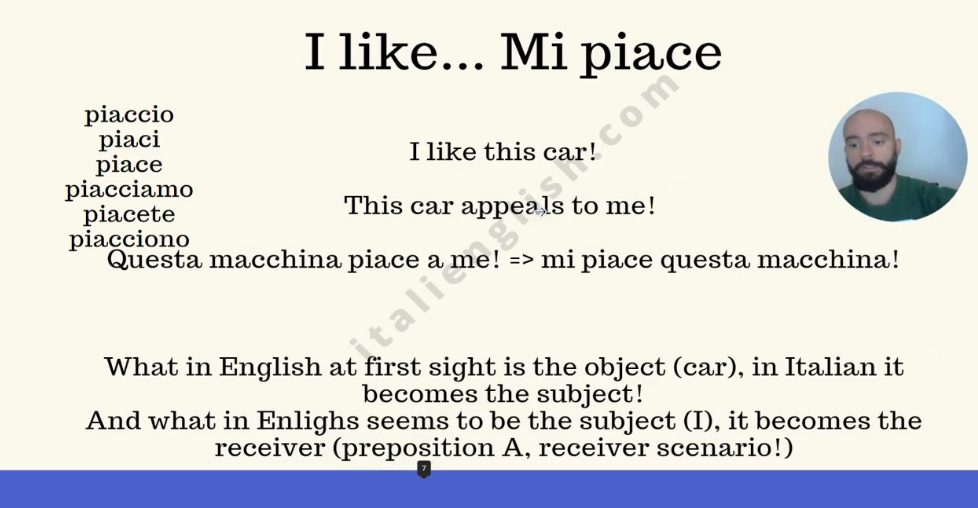Welcome to a linguistic adventure that will unravel the enigmatic structure of expressing likes in Italian. In this comprehensive guide, we’re embarking on a journey to demystify the seemingly perplexing “I like” construction, while keeping SEO rules in mind to ensure you’re armed with the right knowledge to conquer Italian grammar challenges.
Content
- Deconstructing the “I Like” Structure: A Deep Dive
- Unveiling the “I Like” Secret: Mi Piace – The Unexpected Formula
- Exploring the Conjugation of “Piacere” in the Present Tense
- Unveiling the Infinitive: “Piacere”
- The Aha Moment: Rephrasing for Clarity
- Cracking the Pronoun Code: A Crucial Connection
- Expanding Horizons: Beyond “I Like”
- Conclusion: Mastery Through Understanding
Deconstructing the “I Like” Structure: A Deep Dive
Have you ever been intrigued by the intriguing intricacies of Italian grammar?
Specifically, the structure used to express likes.
Fear not, as we’re here to dissect this unique structure, peeling back its layers and diving into its origin, application, and the tantalizing connection it has with pronouns.
Unveiling the “I Like” Secret: Mi Piace – The Unexpected Formula
At first glance, the Italian equivalent of “I like,” “mi piace,” might seem straightforward.
However, beneath the surface lies a fascinating twist that requires an intricate understanding.
The verb “piacere” takes on a form that doesn’t directly correspond to the expected verb for “I like.”
Intriguing, right? Follow me now…
Exploring the Conjugation of “Piacere” in the Present Tense
First off, let’s explore the present tense conjugation of “piacere”.
This will provide us with a solid foundation to understand how this structure functions.
The conjugation goes as follows:
- piaccio
- piaci
- piace
- piacciamo
- piacete
- piacciono
Notice that the verb form “piace” aligns with the third person singular form, even when referring to “I like.”
This is where the uniqueness of the structure comes into play (stick with me…)

Unveiling the Infinitive: “Piacere”
At the core of the “mi piace” structure lies the infinitive verb “piacere.”
The infinitive form of a verb is its base form, often used with other verbs or auxiliary verbs to create different tenses and moods. In the context of expressing likes, “piacere” takes on a distinctive role.
Instead of conjugating the verb according to the subject’s liking (as in English), the structure revolves around the person to whom something is pleasing. (bare with me…)
The Aha Moment: Rephrasing for Clarity
Unlocking the mystery behind this unconventional structure demands a fresh perspective. Imagine transforming “I like this car” into “This car appeals to me.”
This subtle shift in perspective offers a clearer view of why the third person form “piaci” is employed.
By shifting the car from the object to the subject position, the appeal becomes the focal point, unveiling the connection to pronouns.
Do you like what you’ve read so far? Wanna grab a FREE 4-videos series? Subscribe to my newsletter!

I’ll notify you of new articles and send exclusive content. Don’t worry! No spam, no unwanted emails, and no sharing your data with third parties.
Comments are closed.